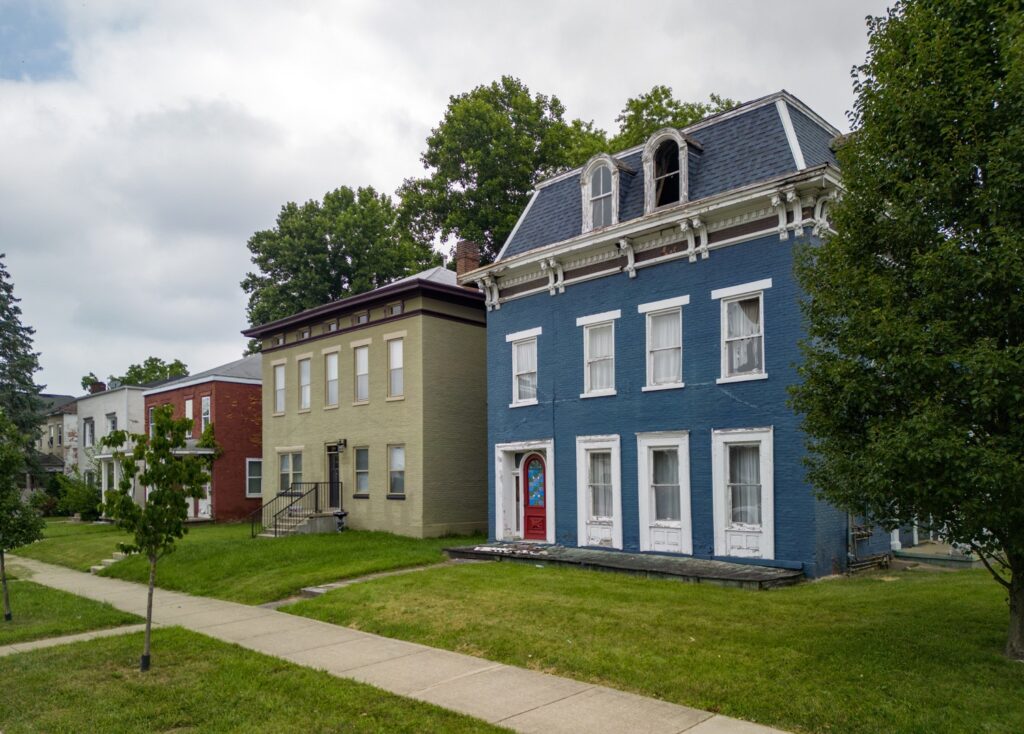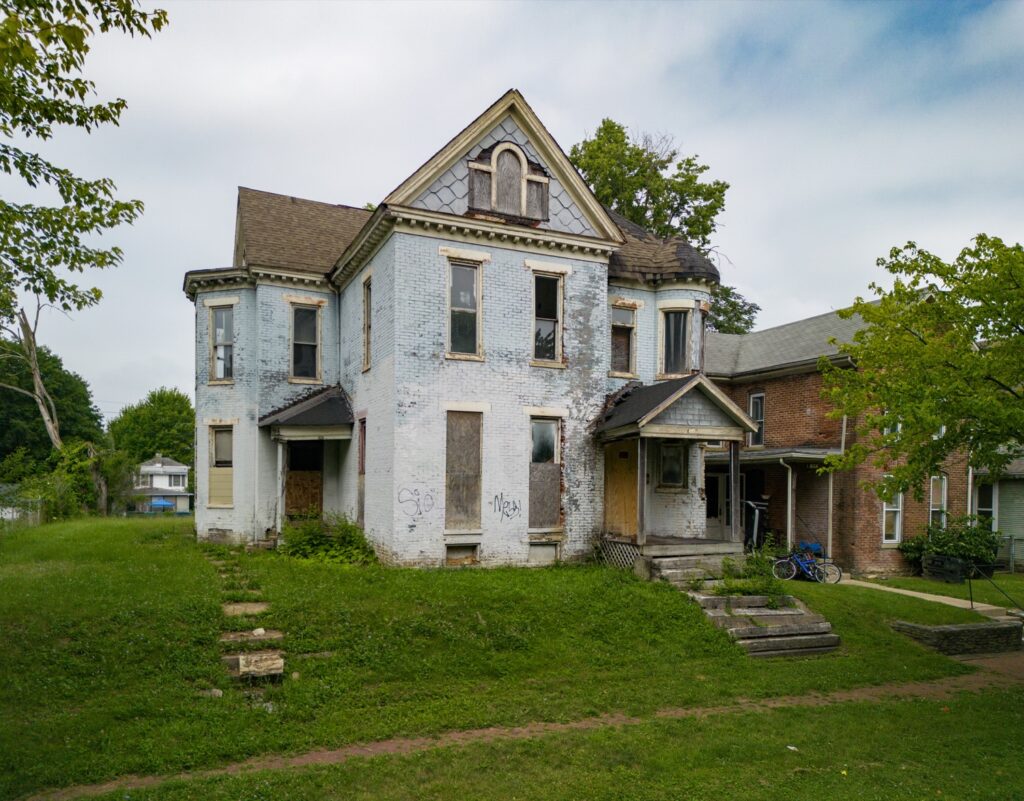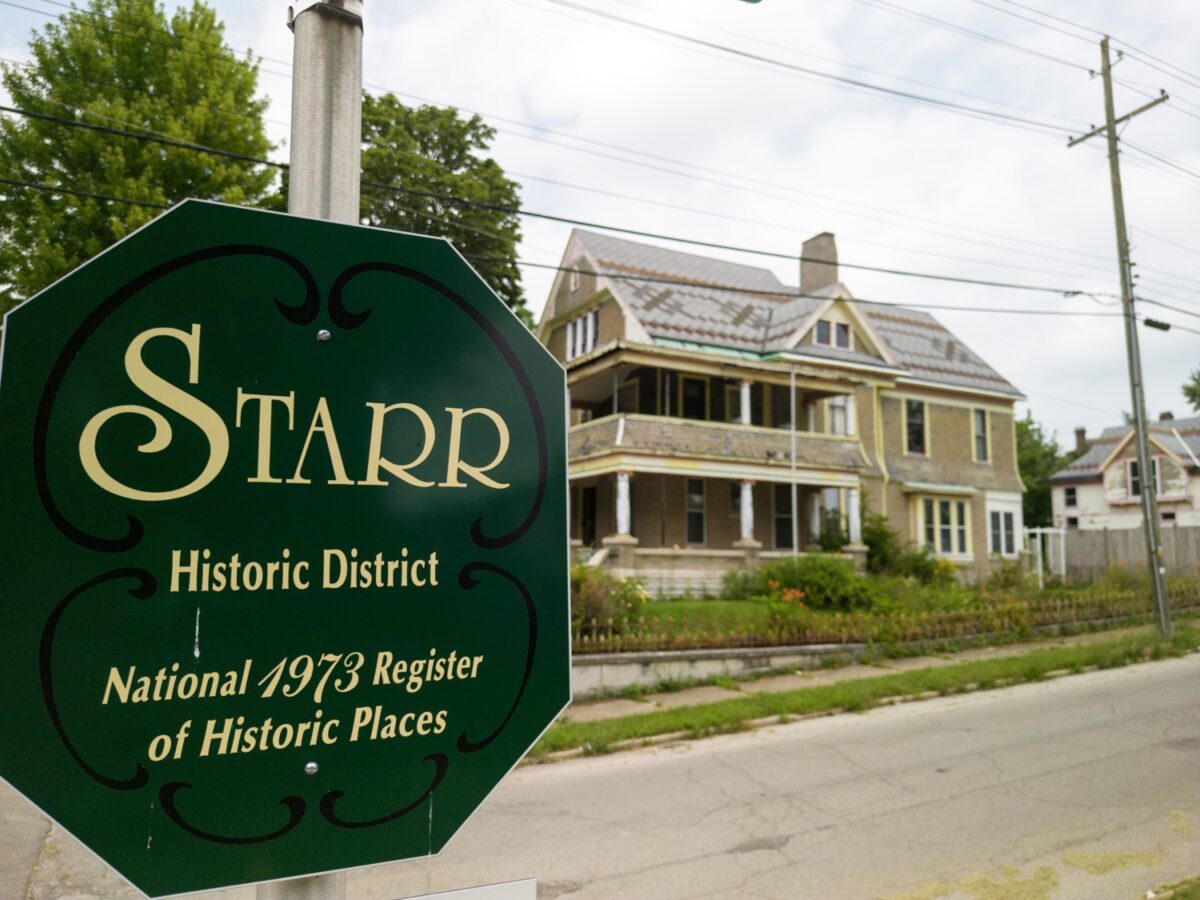It’s not a list you want your neighborhood to be on, but joining it could draw attention and resources to make things better.
Richmond’s Starr Historic District has been added to the “10 Most Endangered” list of Hoosier landmarks in jeopardy, compiled annually by Indiana Landmarks, an Indianapolis-based nonprofit preservation organization.
The district, on Richmond’s north side within North A, North E, North 10th and North 16th streets, has architecture that captures the range of residential styles popular during the late 19th century, including Greek Revival, Italianate, Second Empire and Queen Anne.
At one time, architecture enthusiasts considered the Starr Historic District one of the Midwest’s best-preserved Victorian-era neighborhoods. Today, however, the area is better known for its ongoing decline, Indiana Landmarks officials said in a news release.

Most of the large homes built for wealthy families have been divided into multi-unit rental housing, much of it controlled by negligent or absentee owners, the release said.
A 2018 study by Ball State University found that less than a quarter of the district’s homes are occupied by their owners, and several properties have been abandoned altogether.
Though revitalization is on the rise in the nearby Historic Depot District, it has yet to spread to the Starr neighborhood in any substantial way. The neighborhood was named for early residents Charles and Elizabeth Starr.
The district’s National Register status offers no protection against neglectful property owners.
Indiana Landmarks officials say local designation under a historic preservation commission would help, as would strengthened ordinances against absentee owners and landlords.
Local stakeholders, including Richmond Columbian Properties and Richmond Neighborhood Restoration, are trying to turn the tide, promoting community engagement initiatives and advocating for improved code enforcement, the release said.
Indiana Landmarks is adding support to the Starr District by investing in select properties and relocating its Eastern Regional Office to the formerly endangered Reid Memorial Presbyterian Church, now operated by a local nonprofit as The Reid Center.
City perspective
Josh Imhoff, the city of Richmond’s community development coordinator, said city officials would be open to the creation of a new historic conservation district for the Starr neighborhood if most property owners favored it.
Imhoff said the city’s Historic Preservation Commission could initiate a conservation district, but at least 50% of the neighborhood’s parcel owners would have to agree for it to take effect.
Being in a historic conservation district requires property owners to come before the city’s Historic Preservation Commission to ask for a certificate of appropriateness before they plan to move, demolish or construct a new structure or change its outside appearance.

So far, Imhoff said he’s not aware of widespread interest in a historic conservation district in the Starr neighborhood, and he’s unsure whether additional restrictions would be welcomed by a majority since many of the properties are owned by landlords rather than being owner-occupied.
Imhoff said the city has a 1.1% apartment vacancy rate, showing it doesn’t have enough housing options. If there were more options, people wouldn’t choose to live in some of the houses or apartments currently in various states of repair. Having more housing stock and thus additional appealing choices for renters would help incentivize owners to keep up their properties, he said.
Unfortunately, as much as Richmond officials want to help improve the neighborhood, the city doesn’t have money to rehabilitate the Starr district’s homes, Imhoff said.
Federal or state grants have funded Richmond’s prior targeted neighborhood improvement efforts.
For instance, an owner-occupied housing grant helped address concerns in the Vaile neighborhood a few blocks south. Vaile qualified for aid because of its high foreclosure rate. Owners applied for funds to replace roofs, heating/cooling equipment and other needs to stabilize their homes.
The city also qualified for Blight Elimination Program funds, a voluntary program through which any owner could offer to sell properties to the city. Imhoff said a number of homes on the city’s north side were purchased and then demolished, but most of those were in the nearby Starr Parkside neighborhood, which begins at North 16th and ends at Glen Miller Park on North 22nd.
Imhoff said nonprofit groups could create a Community Housing Development Organization that could be eligible for federal and state grants that help build up neighborhoods. He said that idea was suggested by a speaker at Richmond Columbian Properties’ annual conference, and is worth pursuing.
City officials already have tried to address Starr issues with various approaches, Imhoff said, but haven’t found success. For instance, they’ve reached out to developers to see if new single-family homes could be built on the neighborhood’s vacant lots. However, developers determined they couldn’t make a profit, even if the city gave them the land.
Most of Starr’s available lots are about .10 acres. Imhoff said today’s new home buyers willing to spend $300,000 want a bigger home than will fit on that land, so they select other neighborhoods offering more acreage for development.
Despite that discouraging news, Imhoff remains optimistic about the neighborhood’s future and its potential for investment. He said home ownership isn’t for everyone, and Richmond could benefit from those who are willing to invest in the neighborhood’s restoration and add to the city’s quality rental properties.
“I think it’s solvable, but it needs attention drawn to it,” he said.
He said city officials are pleased that Indiana Landmarks moved its regional office to Reid Center, because they said the organization is respected across the state and nation, and their attention to the area is helpful.
Owner perspective
Ardene Schoeffler lives in an 1857 home, offers meeting and events space at Olde North Chapel, and owns several rental properties in the district, citing their “unbelievable” craftsmanship. She said she would support a historic conservation district to have some say over the neighborhood’s preservation.
Schoeffler said she’s continually investing in her properties, investing more than she keeps for herself. Some of those funds have been spent to repair damages between tenants, but she’s become more selective in choosing renters to minimize those expenses.
However, funds aren’t the only challenges Schoeffler faces. When she’s ready to tackle improvements, such as rebuilding box gutters, Schoeffler can’t find area craftspeople who have the expertise or time to do the work.
Schoeffler said she believes new statewide attention to the neighborhood will be a positive in sharing the homes’ interesting stories and craftsmanship. She’s thought about creating small signs for the homes with QR codes that refer them to a website for more information. Now that the neighborhood is on Indiana Landmarks’ list, she wonders if the organization might be willing to help with that effort.
“Although being listed on the endangered list reflects the issue of neglect, it is a positive by raising the awareness of the importance in preserving this great community asset,” said Matt Stegall, who leads Richmond Columbian Properties.
Richmond has six historic districts listed on the National Register, and Stegall said many of them are suffering from the same neglect as the Starr District.
Indiana Landmarks officials say the places that land on the 10 Most Endangered list often face a combination of problems rather than a single threat — abandonment, neglect, dilapidation, obsolete use, development pressure, or owners who simply lack money for repairs.
“Indiana Landmarks uses its 10 Most Endangered list in several ways. Sometimes it serves an educational role. It functions as an advocacy tool. And it can assist in raising funds needed to save a place,” said President Marsh Davis. “Each endangered place tells a distinct story, and each faces its own set of challenges. In all cases, when an endangered place lands on our list, we commit to seeking solutions that lead to rescue and revitalization.”
Indiana Landmarks’ 10 Most Endangered in 2023
- Starr Historic District, Richmond
- Historic Fraternal Lodges, statewide
- State Theatre, Anderson
- International Harvester Engineering Building, Fort Wayne
- Thomas and Louisa Little House, Plainfield
Repeat entries from 2022:
- First Friends Church, Marion
- Birdsell Mansion, South Bend
- Hulman Building & Garage, Evansville
- Knox County Poor Asylum, Vincennes
- Stinesville Commercial Buildings, Stinesville
Demolition has claimed only 20 of the 153 Most Endangered sites since the list was introduced in 1991, while 101 places are completely restored or no longer endangered.
To find out more about each of the 10 Most Endangered, visit www.indianalandmarks.org or contact Indiana Landmarks, 317-639-4534 or 800-450-4534.
Neighborhood cleanup planned
Area residents are encouraged to join the Alley Cats’ fall cleanup for the Starr neighborhood in Richmond. Volunteers are to meet at William G. Scott House, 204 N. 10th St. and then pick up trash and other items from 10 a.m.-noon Saturday, Sept. 30. Dumpsters will be placed throughout the neighborhood.
Trash bags and cleaning supplies also will be provided. Lunch will be served at noon. In addition to sponsorship from Richmond Columbian Properties and William G. Scott House, partners include Richmond Sanitary District, Wayne County Foundation/Forward Wayne County, Indiana Landmarks, neighbors and the district’s businesses and institutions. For more information, call Matt Stegall at 765-962-9526 or Marty Holman at 765-220-0803.
A version of this article appeared in the August 30 2023 print edition of the Western Wayne News.

